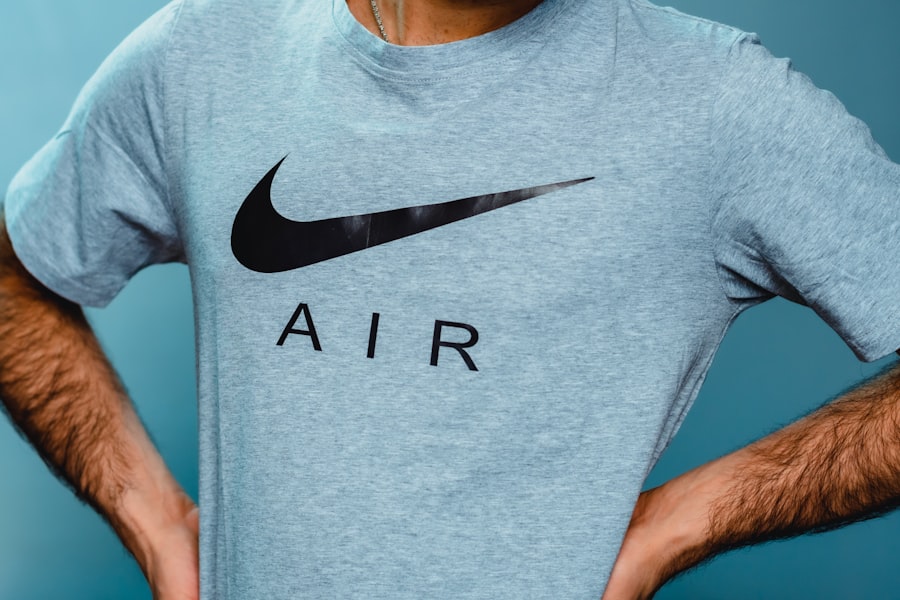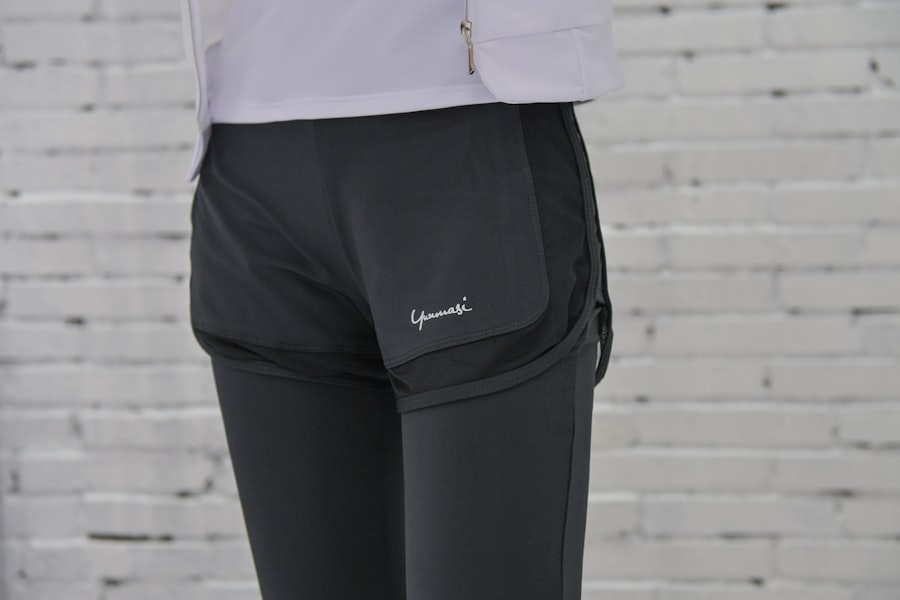The sportswear market has evolved significantly over the past few decades, transforming from a niche segment catering primarily to athletes into a multifaceted industry that appeals to a broad spectrum of consumers. This evolution is driven by a growing awareness of health and fitness, as well as a cultural shift towards athleisure, where sportswear is not just confined to the gym but is also embraced in everyday fashion. According to market research, the global sportswear market was valued at approximately $180 billion in 2020 and is projected to reach over $250 billion by 2026.
This growth is fueled by increasing participation in sports and fitness activities, rising disposable incomes, and a heightened focus on wellness. Moreover, the market is characterized by intense competition among established brands like Nike, Adidas, and Under Armour, as well as emerging players that are carving out their own niches. These companies are not only competing on product quality and performance but also on brand image and consumer loyalty.
The rise of e-commerce has further intensified this competition, allowing brands to reach consumers directly and offering them a wider array of choices. As a result, understanding the dynamics of the sportswear market requires a comprehensive analysis of consumer trends, competitive strategies, and technological advancements that are shaping the industry.
Key Takeaways
- Grasping market trends and consumer needs is essential for success in sportswear.
- Defining clear target audiences helps tailor products and marketing efforts effectively.
- Building a distinct brand identity differentiates a company in a competitive market.
- Collaborations with influencers and athletes boost brand credibility and reach.
- Continuous innovation and multi-channel approaches enhance customer engagement and sales.
Identifying Target Consumers
Identifying target consumers in the sportswear market involves a nuanced understanding of various demographics, psychographics, and lifestyle choices. The primary consumer segments include professional athletes, fitness enthusiasts, casual wearers, and fashion-conscious individuals. Each of these groups has distinct needs and preferences that influence their purchasing decisions.
For instance, professional athletes prioritize performance-enhancing features such as moisture-wicking fabrics, breathability, and durability. In contrast, casual wearers may focus more on style and comfort, seeking versatile pieces that can transition from workouts to social settings. Furthermore, age plays a significant role in shaping consumer behavior within the sportswear market.
Younger consumers, particularly millennials and Gen Z, are increasingly drawn to brands that align with their values, such as sustainability and social responsibility. They are more likely to engage with brands that promote inclusivity and diversity in their marketing efforts. On the other hand, older consumers may prioritize functionality and reliability over trendiness.
Understanding these nuances allows brands to tailor their products and marketing strategies effectively, ensuring they resonate with their intended audience.
Developing a Unique Brand Identity

In a crowded marketplace, developing a unique brand identity is crucial for standing out and fostering consumer loyalty. A strong brand identity encompasses not only visual elements like logos and color schemes but also the brand’s mission, values, and personality. For example, Nike’s “Just Do It” slogan encapsulates its ethos of empowerment and motivation, resonating deeply with athletes and fitness enthusiasts alike.
This emotional connection is vital; consumers are more likely to choose brands that reflect their own aspirations and lifestyles. To create a compelling brand identity, companies must engage in thorough market research to understand their target audience’s preferences and values. This process often involves crafting a brand story that communicates the company’s origins, mission, and vision in an authentic manner.
For instance, Patagonia has successfully positioned itself as an environmentally conscious brand by emphasizing its commitment to sustainability and ethical manufacturing practices. By aligning its identity with the values of its target consumers, Patagonia has cultivated a loyal customer base that appreciates its dedication to social responsibility.
Leveraging Influencer and Athlete Partnerships
| Metric | Description | Example Value | Importance |
|---|---|---|---|
| Engagement Rate | Percentage of audience interactions (likes, comments, shares) relative to total followers | 4.5% | High – Indicates audience interest and campaign effectiveness |
| Reach | Number of unique users who have seen the influencer or athlete content | 1,200,000 | High – Measures potential audience size |
| Conversion Rate | Percentage of audience taking desired action (e.g., purchase, sign-up) after exposure | 3.2% | High – Directly tied to campaign ROI |
| Cost Per Engagement (CPE) | Average cost spent per audience interaction | 2.75 | Medium – Helps optimize budget allocation |
| Brand Mentions | Number of times the brand is mentioned in influencer or athlete posts | 350 | Medium – Reflects brand visibility |
| Follower Growth | Increase in brand’s social media followers during campaign period | 15% | Medium – Indicates growing brand interest |
| Audience Demographics Match | Percentage alignment between influencer/athlete audience and target market | 85% | High – Ensures relevance of partnership |
In today’s digital age, influencer marketing has emerged as a powerful tool for brands looking to enhance their visibility and credibility in the sportswear market. Collaborating with influencers—individuals who have established credibility and a substantial following on social media—can help brands reach new audiences and build trust among potential customers. For instance, brands like Gymshark have effectively utilized fitness influencers to promote their products through authentic content that showcases real-life usage and benefits.
Athlete partnerships also play a pivotal role in shaping brand perception. When renowned athletes endorse a brand or collaborate on product lines, it not only elevates the brand’s status but also instills confidence in consumers regarding product quality and performance. For example, Michael Jordan’s partnership with Nike led to the creation of the iconic Air Jordan line, which has transcended sports to become a cultural phenomenon.
Such collaborations can create a sense of aspiration among consumers who wish to emulate their favorite athletes’ success.
Creating Engaging and Impactful Marketing Campaigns
Creating engaging marketing campaigns is essential for capturing consumer attention in an oversaturated market. Successful campaigns often leverage storytelling techniques that resonate emotionally with the audience. For instance, Under Armour’s “I Will What I Want” campaign featured female athletes breaking barriers in their respective sports while challenging societal norms.
This approach not only highlighted the brand’s commitment to empowering women but also fostered a sense of community among female athletes. Additionally, interactive marketing strategies can enhance consumer engagement by encouraging participation and feedback. Brands can utilize social media platforms to host challenges or contests that invite consumers to share their fitness journeys or showcase how they incorporate the brand into their lives.
Such initiatives not only generate user-generated content but also create a sense of belonging among consumers who feel connected to the brand’s mission.
Utilizing Omni-channel Distribution Strategies

In an era where consumers expect seamless shopping experiences across multiple platforms, adopting an omni-channel distribution strategy is paramount for sportswear brands. This approach integrates various sales channels—such as brick-and-mortar stores, e-commerce websites, mobile apps, and social media platforms—allowing consumers to interact with the brand in ways that suit their preferences. For example, Nike has successfully implemented an omni-channel strategy by offering personalized shopping experiences through its app while maintaining a strong presence in physical retail locations.
Moreover, leveraging data analytics can enhance inventory management and customer insights across channels. By analyzing consumer behavior patterns, brands can optimize their product offerings based on demand fluctuations in different regions or seasons. This data-driven approach not only improves operational efficiency but also ensures that consumers have access to the products they desire when they want them.
Incorporating Technology and Innovation
The integration of technology and innovation into product development is reshaping the sportswear landscape. Brands are increasingly investing in research and development to create high-performance materials that enhance athletic performance while prioritizing comfort and style. For instance, Adidas has pioneered the use of 3D printing technology to produce customized footwear tailored to individual athletes’ needs.
This level of personalization not only improves performance but also fosters a deeper connection between consumers and the brand. Additionally, wearable technology is becoming an integral part of the sportswear experience. Fitness trackers and smart clothing equipped with sensors provide users with real-time data on their performance metrics, enabling them to make informed decisions about their training regimens.
Brands that embrace these technological advancements can differentiate themselves in the market while catering to the growing demand for data-driven fitness solutions.
Measuring Success and Adapting Strategies
Measuring success in the sportswear market requires a multifaceted approach that encompasses various key performance indicators (KPIs). Sales figures alone do not provide a comprehensive picture; brands must also consider metrics such as customer engagement rates, brand loyalty indices, and social media reach. By analyzing these KPIs regularly, companies can gain valuable insights into consumer behavior and preferences.
Furthermore, adaptability is crucial in an ever-changing market landscape. Brands must remain agile in response to emerging trends or shifts in consumer sentiment. For instance, during the COVID-19 pandemic, many sportswear companies pivoted their strategies to focus on home fitness solutions as gyms closed worldwide.
By staying attuned to market dynamics and being willing to adjust their approaches accordingly, brands can maintain relevance and continue to thrive in a competitive environment. In conclusion, navigating the complexities of the sportswear market requires a deep understanding of consumer behavior, innovative marketing strategies, and a commitment to continuous improvement. By leveraging technology, fostering meaningful partnerships, and developing a unique brand identity, companies can position themselves for success in this dynamic industry.



